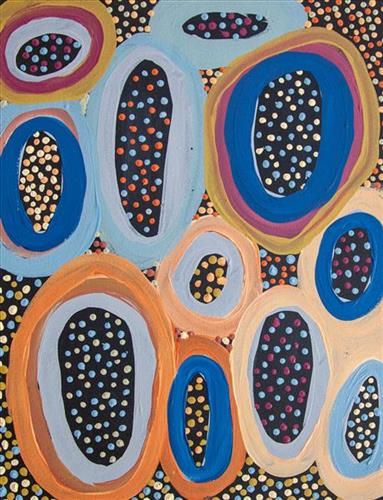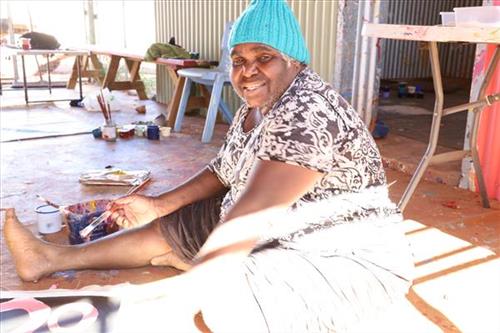111582122361
Wiirnukurrujunu
Wiirnukurrujunu is a spring located southeast of Parnngurr Aboriginal community. Described by Ngamaru is her first encounter with whitefells, occurring nearby. Shortly after this meeting Ngamaru, along with the other 28 Martu she had been travelling with, was picked up by the Native Welfare Department to be taken to Jigalong Mission in 1963. Collectively the group had come to the decision to move to the mission as a result of an extended drought, which had caused a scarcity in food and water resources. The group also wanted to join their families, who had already moved to Jigalong.
Wiirnukurrujunu also features as a site in two central Jukurrpa (Dreaming) narratives; Minyipuru (Jakulyukulyu, Seven Sisters) and Wati Kujarra (Two Goanna Men). The Wati Kujarra existed as half men, half goanna, and were responsible for the creation of many land features in Martu Country and beyond as they travelled, hunted and burned Country together. Wati Kujarra is a ngurlu (sacred, taboo) men’s story, and for this reason much of the content is only shared with initiated men. Minyipuru is an important Jukurrpa narrative for Martu, Ngaanyatjarra, Pitjantjatjara and Yankunytjatjara people that is associated with the seasonal Pleiades star constellation. Beginning in Roebourne on the west coast of Western Australia, the story morphs in its movement eastward across the land, following the women as they walk, dance, and even fly from waterhole to waterhole. As they travel the women camp, sing, wash, dance and gather food, leaving markers in the landscape and creating landforms that remain to this day. During the entirety of their journey the women are pursued by a lustful old man, Yurla.




